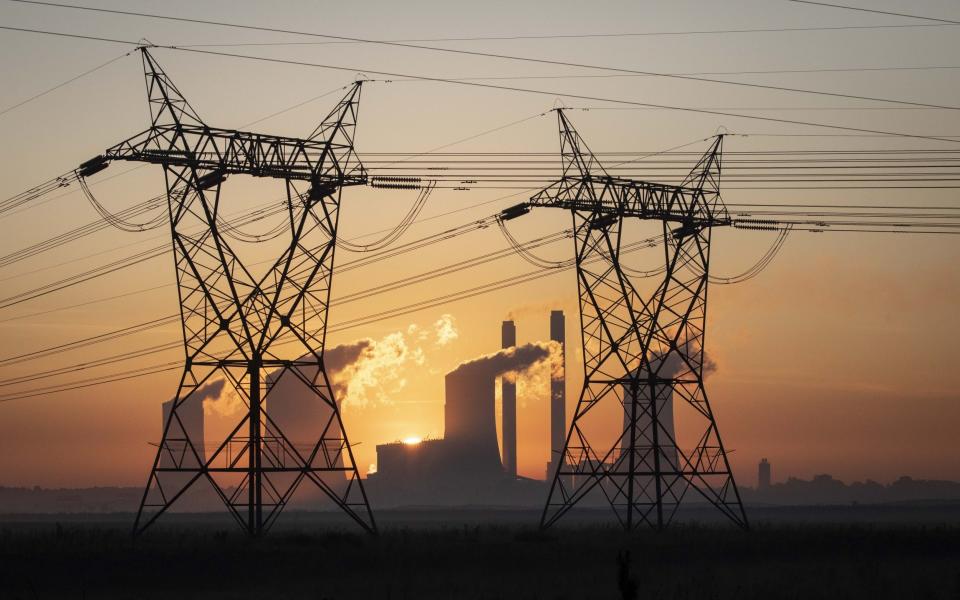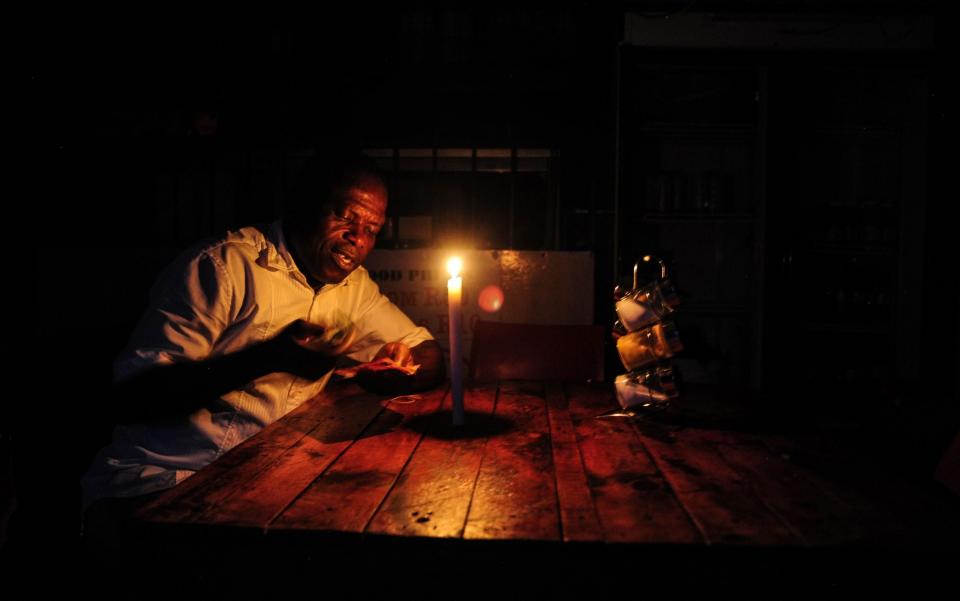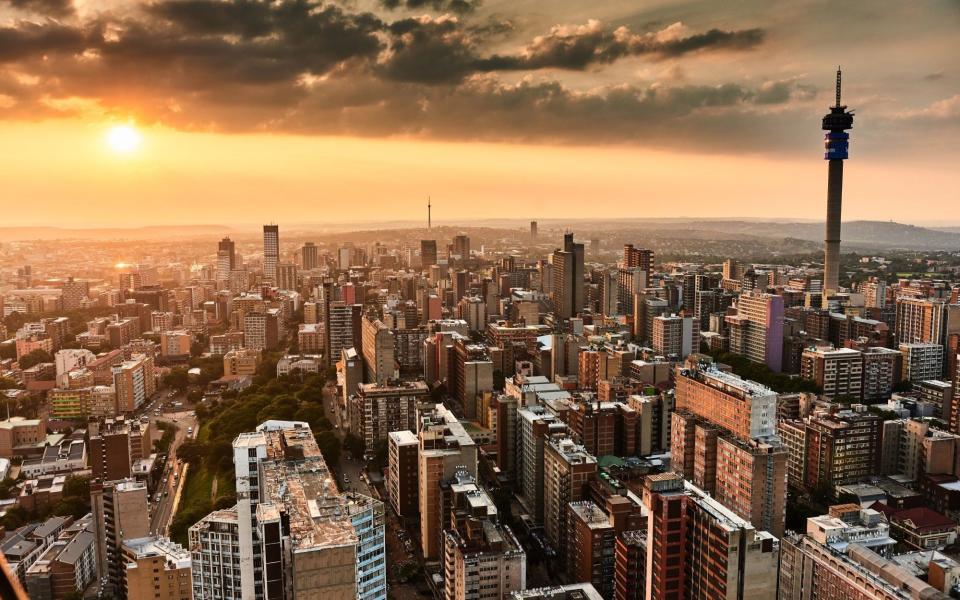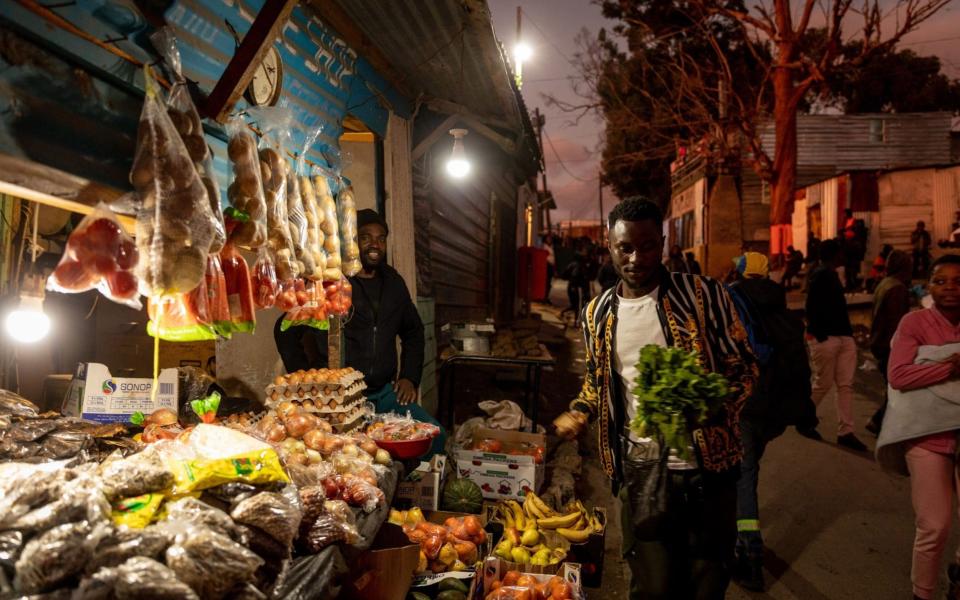How rolling power cuts have brought Cape Town – and South Africa – to its knees

With its iconic Table Mountain, meandering promenades, and high-end restaurants, Cape Town is internationally renowned for its beauty and pleasure. It regularly features on lists of the best cities in the world, drawing in tourists from far and wide to sample its rich sights, cuisines and culture.
But what is less well known is that, for up to 10 hours each day, this city of 4.6 million people goes without any electricity.
Each evening this week, at 8pm, the lights in my neighbourhood at the foot of Table Mountain have gone out, extinguishing everything from televisions to street lights and traffic lights.
These nightly power cuts, which consign everyone to another evening of lamps or pallid battery lighting, are the third or even fourth separate outage of the day, some lasting four hours at a time.
Such blackouts have waxed and waned in severity, but have struck almost every day since September.

As a foreign correspondent for the Telegraph, I have lived before in countries with occasionally patchy electricity supplies, such as Afghanistan and Pakistan, but nowhere nearly as bad as South Africa is at present.
The blackouts are not restricted to Cape Town and the situation is if anything worse in the rest of South Africa.
An escalating energy crisis has left Africa’s most industrialised nation unable to keep the lights on and having to impose daily rationing of electricity to stop the national grid collapsing.
Rolling power outages which were at first supposed to be an emergency measure are now routine and loom over both the country's economic landscape and residents’ daily schedules.
‘Exceptionally difficult winter’
Starved of investment for decades and looted by corruption, the country’s fleet of coal power stations providing four-fifths of the country’s power have been run into the ground and are breaking down.
Power cuts, known as load-shedding, have slowly been escalating since they began 15 years ago, but have gotten sharply worse in the past nine months. There are now concerns the coming southern hemisphere winter, when temperatures drop and demand for electricity rises, will usher in a new highpoint for outages.
“I'll be brutally honest. It’s going to be an exceptionally difficult winter,” the newly appointed electricity minister, Kgosientsho Ramokgopa, warned last week.
Eskom, the state-run power generator, can guarantee supplies of 27,000 megawatts, Mr Ramokgopa has said. But summer demand peaked at 32,000 MW, and in winter it can soar to 37,000 MW.

The cuts are stifling an economy which was already badly hit by weak growth and the aftermath of strict Covid lockdowns. They are also scaring off foreign investment, say business leaders.
Last month, the International Monetary Fund, said the country was being buffeted by “an unprecedented energy crisis”. Growth will almost come to a halt in 2023, the fund predicted. Unemployment is already running at around a third.
The vagaries of load-shedding have come to dominate daily life for South Africa’s 60 million residents, with the lack of power affecting nearly every aspect of a country once used to cheap and plentiful electricity.
An eagerly followed smartphone app alerts people to when the power will go out in their neighbourhood. The timetable allows them to then plan accordingly around when they will be able to run the washing machine, cook meals, watch television, or charge their phones. These windows of electricity have become increasingly brief.
The power cuts are said to be leading to an increase in crime, and other dangers. Pinkie Manenzhe, a shop worker in a Johannesburg greengrocer and florist, said the power cuts were forcing her to use “dangerous” paraffin stoves because gas was too expensive.
Some neighbourhoods in Johannesburg have lost water supplies, partly because pumping stations are without power.

The cuts are sending businesses to the wall. While the biggest firms and shops have been able to fall back on costly generators, many small shops are unable to keep going.
When the lights go out, so do tills, card readers, appliances and fridges. Some restaurants offer special load-shedding menus of items they can cook without electricity. Others just hang signs on their doors saying they are closed.
A recent survey by Nedbank found 64 per cent of small township businesses ceased operations during load-shedding and almost two-third of business owners had cut jobs.
Sandile Sangweni, a spokesman for Kwamashu Business Chamber, north of Durban, said: “It’s the corner shops and the butcheries that are struggling because they stock perishable items that need cold storage.
“Power outages mean they can’t prepare food or store it. They end up having to throw away stock, and they lose money when they can’t serve clients.”

Phillip Ostin, who runs a butchers in an upmarket suburb of Johannesburg, said he was having to run a generator two-thirds of the day to stop his meat going off.
“Load shedding is terrible. It has depressed us all, including customers.” With no power, he said he had lost trade catering to parties and get-togethers. “They also need music… so they need electricity, so those customers are no more.”
South Africa’s electricity woes have also been made worse by theft and vandalism. Earlier this month, areas of north and east Pretoria lost what little power they had when seven pylons carrying high-voltage cables collapsed. The local mayor said there was a “very strong possibility that this is because of criminal vandalism”.
Thieves have been known to target pylons, railways and other infrastructure to steal metal and cabling.
The constant stress of imminent power cuts and their impact on economic fortunes is taking its toll on South Africans’ mental health, according to the South African Depression and Anxiety Group (Sadag).
Three-quarters of people reported their bosses are still expecting them to deliver the same amount of work even with power cuts. Many report a feeling of helplessness or fear for the future, the group said.
Basic services like education and health are also suffering. Josias Naidoo, vice chairman of the National Health Care Professionals Association, said the need to pay for generators and fuel has quickly blown a hole in hospital budgets.

Generators keep operating theatres going during cuts, but elective surgery is often being postponed. A lot of smaller clinics do not have back-up generators.
“This is the worst we have seen,” said Jack Bloom, the opposition Democratic Alliance’s shadow health member of the executive council for Gauteng province.
“We are not geared for this. And it’s going to get worse in winter. Medicines go off, fridges don’t last. There are 380 clinics in Gauteng province. They don’t have generators, so vaccine delivery is falling off as we see with measles, for example.
“Telephone exchanges don’t work so sometimes it is hard to get through to hospitals. It is so dark in some hospitals that doctors, literally, can’t see in some of them.”
The power cuts are expected to dominate next year’s general elections, where for the first time in three decades the ruling African National Congress (ANC) could lose its absolute majority.
Yet both the ANC and energy experts say there are no easy quick fixes. Adding extra generating capacity, for example new solar or wind farms, could take a minimum of two years.
Few believe assurances from president Cyril Ramaphosa that progress is being made. In the meantime, South Africans can only carry on into what looks like a cold, dark winter.
With additional reporting from Peta Thornycroft in Johannesburg
Protect yourself and your family by learning more about Global Health Security.

 money
money 